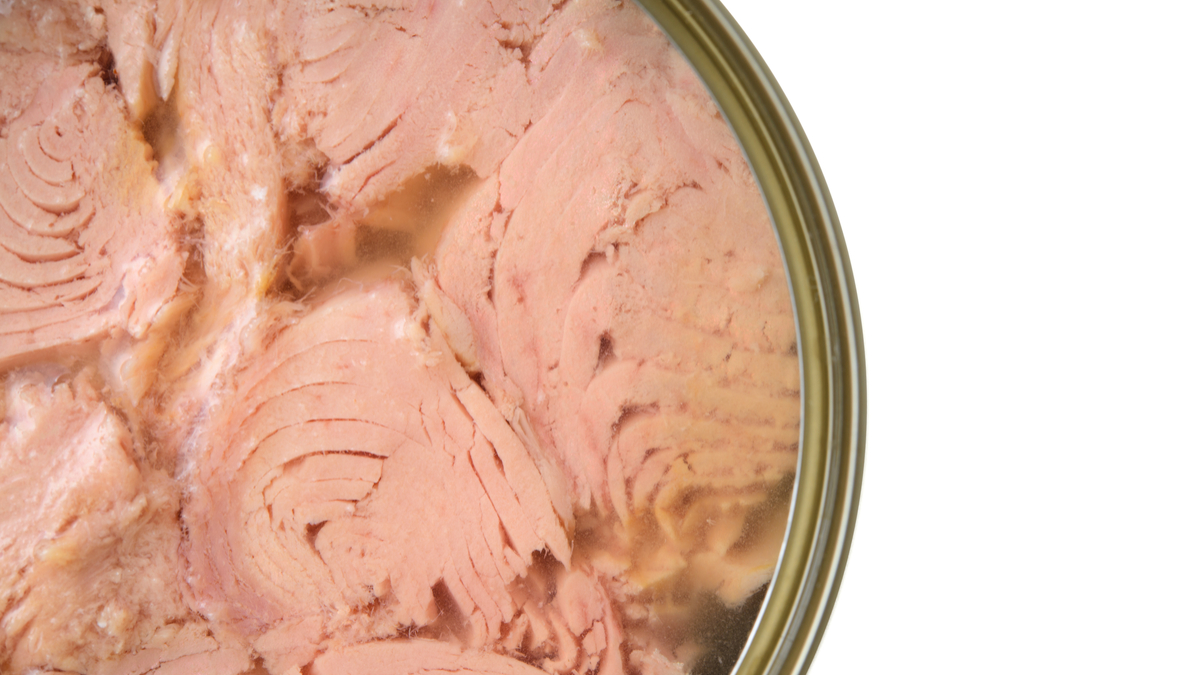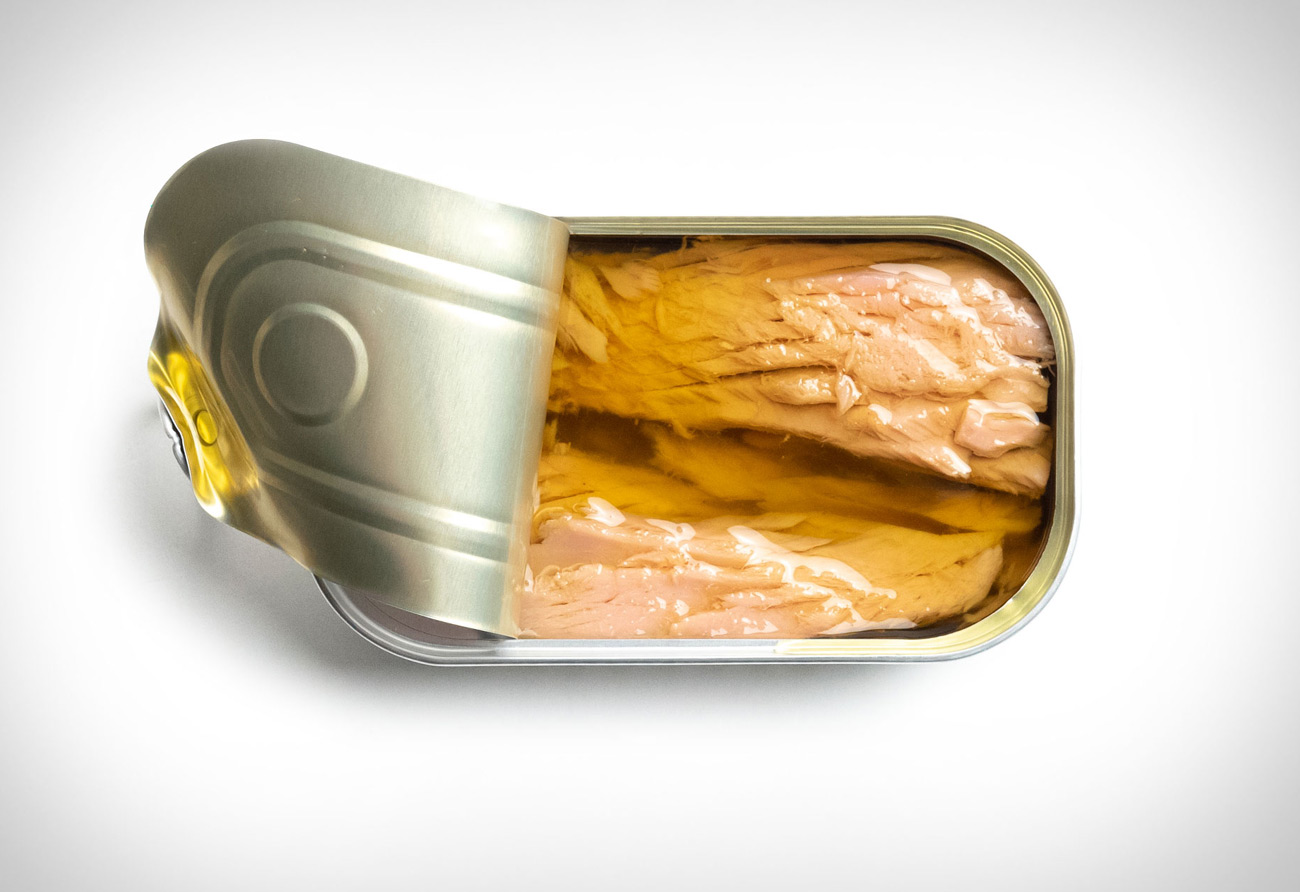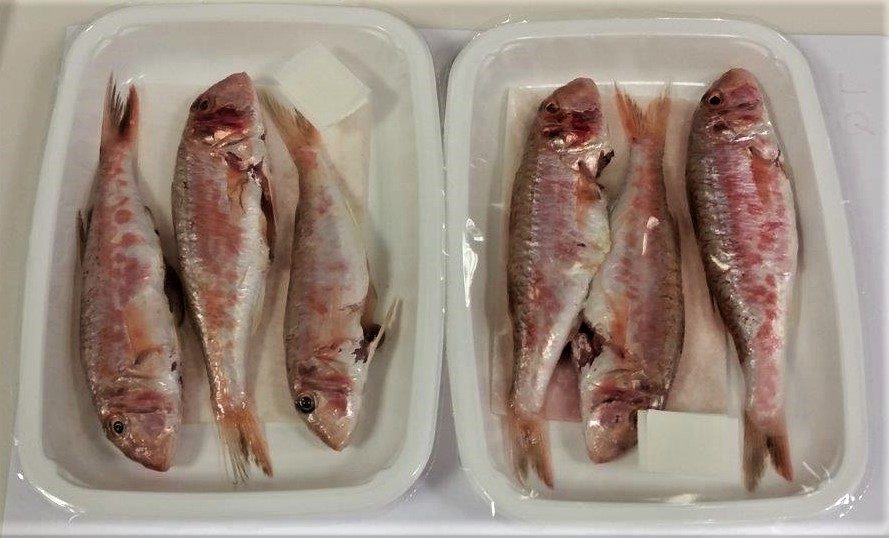The Sea and Fish Products Area, through applied research activities and service to companies, addresses operators from the entire fish and aquaculture products supply chain, ranging from companies handling raw materials and their initial storage to producers of preserved and semi-preserved fish products, as well as representatives of the sales chain (importers, distributors, etc.), institutional customers and related industries (materials and ingredients, packaging, equipment, etc.).
The applied research activity relates to basic research on traditional products and technologies (canned fish and shellfish, salted and marinated semi-preserved products, deep-frozen and dried products, etc.) in terms of safety and quality, as well as research aimed at product innovation (ready-to-eat refrigerated products, spreadable creams in innovative packaging, etc.) and process innovation (high pressure, electromagnetic technologies, etc.)
The services offered to companies are primarily analysis on composition and nutrients, quality indexes, presence of chemical contaminants, hygienic and sanitary raw materials and the most widely marketed finished products control.
The area also provides regular assistance to companies in solving analytical and technological problems and environmental issues in defining HACCP systems, quality management (ISO certification) and supply chain traceability, and in interpreting national provisions and community law.

Sea and Fish Products
Orlando Ivana
Analytical problems quality technologies
081 5133725
ivana.orlando@ssica.it
Lovoi Andrea
Analysis
081 5133723
andrea.lovoi@ssica.it
Ficano Giovanna
Analysis
081 5133724
giovanna.ficano@ssica.it
Areas of activity
Fish and marine products have today increased in both consumption and appreciation for their nutritional qualities. This enables fresh and processed sea food companies to develop the best characteristics of their products, highlighting their strengths but, at the same time, exposing the sector to more accurate investigations into its criticalities. Also in the light of this growing interest, the Experimental Station intends to be even more attentive in playing an important role in addressing these issues by improving its skills and trying to increase collaboration with fish companies. As the technology of production of canned fish is today sufficiently mature and consolidated, it requires nothing more than control analyses for the simplest analytical parameters.
Instead, the most innovative aspects towards which the SSICA is oriented, even considering the indications of the companies themselves, are six:
Sea and Fish Products – Safety
Besides the well-known dangers and health risks deriving from pollutants (heavy metals) or pathogens development (clostridia), for which SSICA has the possibility to monitor the product safety by means of specific analyses, there is now an emergency concerning micro and nanoplastics that alarms consumers, as a result of overt pollution and increasing presence of plastics in the sea.
SSICA has started a work aimed at assessing the presence, the toxicity and the effects on health and at determining plastic micro/nano residues in seafood products.
Furthermore, SSICA laboratories routinely carry out histamine content analyses in canned fish.
Raw material
The greater consumer awareness on the risks but also on the quality of the product and on the value of the raw material connected also to its origin, have long imposed to give guarantees on origin and on the correct denomination on the label. In this field it is not only legislation that sets the rules, but also the increased sensitivity of consumers. The fish caught has by its nature an origin that is not easily delimitable, as that can be instead for a pig breeding.
Nevertheless, some results have been obtained on the possibility of identifying the origin of some species. Although not conclusive, but still to be concluded, some protocols for the anchovies’ origin determination have been implemented in collaboration with some university and can be continued to obtain full validation in the presence of business interest. The results obtained for the distinction of species between anchovy, round sardinella and sardine fillets, following a work done years ago, are, on the contrary, conclusive.
Recently, the method for determining commercial tuna species has been defined, distinguishing between Thunnus Albacares (Yellowfin Tuna), Thunnus Alalunga (Albacore Tuna), Thunnus Obesus (Bigeye Tuna) and Katsuwonus Pelamis (Skipjack Tuna).
These protocols of analysis exploit the specificity of the DNA extracted and its identification with the PCR-RealTime technique, a consolidated and now very reliable method used for the identification of many animal and plant species and is also effective on processed products.
It has the limit of being extremely sensitive, to the point that a positive result can refer to contamination in traces, commercially not significant.
In this case it is necessary to resort to a quantification, a strategy that for DNA is more laborious and that allows a certain margin of variability.
Sea and Fish Products – Analyses
The possibility of exhibiting an additional quality with commercial value may depend on an extra content that must normally be certified by laboratory analyses. SSICA performs analyses on those analytical parameters that can represent an added value in terms of presence (iodine content), absence (heavy metals) and qualitative composition (fatty acid profile).
In any case, the Institute is willing to develop methods of analysis, but also checks on the actual duration and/or increase in shelf life, following changes in process, packaging or new types of packaging (on the fresh product).
Also of considerable importance is another type of value of the raw material to be recovered, which is defined as production waste. In addition to those which can be identified by companies, SSICA has already identified a sector of interest: the recovery of substances with high nutritional and technological value present in the exoskeletons of crustaceans.
Among the others two of them have been indicated: chitosan which, thanks to studies done in SSICA, has already shown excellent antioxidant properties, and astaxanthin. The development of techniques for their recovery and use in convenient terms is one of the Department’s priorities for the coming years.
Collaboration with companies in the study of those and of other compounds of which the seafood sector is rich is important and will also be included in the presentation of both national and European funded projects in collaboration with other research institutes and universities.
On the sidelines, it should be noted the research activity on the use of algae also in areas other than those of the seafood industry which could also have an impact on this sector. Their properties and composition are increasingly highlighted in scientific studies. SSICA has already used them as seasonings to replace sodium chloride with excellent results although their potential is certainly greater.
Finally, with new problems emerging, as has already happened in other situations (food fraud, allergen emergencies), SSICA proves able to offer analytical assistance also by developing new methods (determination of species, GMOs) in addition to fatty acid and amino acid profiles and protein analysis by mono and bidimensional electrophoresis.
Waste reduction and environmental impact study
It is known that environmental sustainability is today the most topical issue in public opinion and among consumers. The whole food business sector is involved in this problem, even if at different levels:
- the acquisition of the raw material (fished or aquaculture)
- processing (industrial technological process)
- the presence of waste
- the duration of the finished product before it can no longer be consumed and become waste itself.
SSICA is able to conduct the product life cycle analysis (LCA) taking into consideration all the steps just mentioned, using dedicated software (SimaPro 9).
By same analysis, soil consumption, carbon footprint, ecological footprint, water consumption and other variables can be calculated.
An improvement in the environmental impact is also achieved by using all the raw materials and SSICA is available to identify the possibilities of recovery in individual business situations, analyzing the non-processable raw material, scheduling an extraction and valorisation plan.
New materials
The institute has all the skills to develop packaging materials capable of extending the fresh fish commercial life from the counter (chitosan film). Experimental tests have already been conducted on this topic with satisfactory results.



FAQ
What is histamine?
It is a biogenic amine that forms in foods, under certain conditions, by the action of some microorganisms which transform the amino acid histidine into histamine.
Why does histamine form?
The main causes are contamination or bad hygienic conditions of the raw material and unfit thermal storage conditions. Histamine is a highly heat-stable toxin that is not inactivated by classic thermal cooking treatments. To thermally inactivate histamine, a heat treatment of 90 min at a temperature of 116°C would be necessary; however, its formation is blocked by low temperatures or by refrigeration (4°C) and freezing.
In which products can histamine form?
In many fish and mainly in tuna, mackerel, sardines, herring, anchovies.
What damage does histamine involve?
The ingestion of foods containing a high concentration of histamine can give rise to intoxications, even serious ones, affecting the consumers (especially those who are immunocompromised, suffering from asthma or various allergies), with nausea, emesis, diarrhea, headache, up to histamine shock.
What are the measures to be taken to avoid histamine formation?
- Raw material control
- Quick and efficient storage at refrigerated or freezing temperatures of the raw materials and intermediate products
- Careful processing hygiene
- For salted products: aw <0.75, humidity <50%
- Refrigerated storage of the finished product (<4°C).
What are the legal limits for histamine?
They are established in EC Reg. 853/04, where, together with the limits, also the sampling that must take place with the following modalities are reported.
From each lot 9 samples are taken for which:
- the average content must not exceed 100 ppm (100 mg/kg);
- two samples (out of 9) may exceed 100 ppm but must be less than 200 ppm;
- no sample must exceed 200 ppm.
These limit values apply only to the fish of the following families: Scombridae, Clupeidae, Engraulidae, Coriphenidae.
However, if the fish of these families have undergone a process of enzymatic maturation in brine, they may have higher levels of histamine, which must not in any case exceed twice the values listed above.
What are the additives allowed in fish products?
With regard to potentially toxic substances added to foods, the risks may come from additives not permitted or present in excess of the permitted limits, based on the current legislation, namely the Decr. MINISAN n.209 dated 27-2-1996.
Colouring agents are generally not allowed in fresh and processed fish products (Annex IV), except (Annex VI) E 123 Amaranth in fish eggs (max 30 mg/kg), E 160 b Annatto, Bixin, Norbixin in smoked fish (max 10 mg/kg) and a series of substances, reported in Ann. VII of the aforementioned decree, in fish and crustacean paste, pre-cooked crustaceans, salmon substitutes, surimi, fish eggs and smoked fish.
As for sweeteners (Annex VIII), in bittersweet preserved and semipreserved fish and in marinated fish, crustaceans and molluscs, E 950 Acesulfame K (max 300 mg/kg), E 955 Sucralose (max 120 mg/kg), E 959 Neoesperidin DC (max 30 mg/kg), E 962 Salt of aspartame-acesulfame (max 200 mg/kg) are allowed.
Please refer to Annex IX for a list of permitted additives (“as required”) in processed fish products, to Annex X for the use of E333 Calcium Citrates (q. s.) in unprocessed fish, crustaceans and molluscs, even frozen and deep-frozen, and to Annex XI-XII with reference to various fish products, for some permitted preserving agents and other additives (and their corresponding limits).
Is there a glazing limit for frozen fish?
Glazing, according to art. 16 of Legislative Decree 109/92, as amended by Legislative Decree 181/2003, is considered a tare. This change has cleared the field of possible misunderstandings, which occurred in the past also by control authorities, due to the interpretation of the glaze as an ingredient, covering medium or added water. On the signs/labels of the products sold in bulk the percentage must be indicated, while in pre-packaged products it is necessary to indicate on the label the net weight of the glazing. There is no standard that indicates a maximum permitted percentage of glazing, which can therefore vary according to the technological needs and the product characteristics. For the verification to be performed on the glazing weight net, there are the methods proposed by ISS Istituto Superiore di Sanità (Method of Analysis of AOAC 18.002). Furthermore, as indicated by the Istituto Superiore di Sanità, the tolerances set by art. 67 of Presidential Decree 327/80 (less waste on the declared weight) are applied.
When should the commercial name of the species, the production method...
When should the commercial name of the species, the production method, the catch area for fishery products for sale to the final consumer be declared on the label?
Article 4 of EC Reg. 104/2000 in paragraph 1 establishes that without prejudice to the provisions of Dir. N.79/112/EC the products referred to in Article 1 a), b), c), may be proposed for retail sale to the final consumer, irrespective of the marketing method, only if appropriate marking or labelling indicates: the commercial name of the species; the production method; the catch area.
In article. 1 of EC Regulation 104/2000 under item a) we find “live fish”, “fresh or chilled fish”, “frozen fish” and “fish fillets and other fish meat (whether or not minced), fresh, chilled or frozen”; in item b) we find “dried, salted or in brine” fish, “smoked fish, whether or not cooked before or during smoking”, “flours, meals and pellets of fish, fit for human consumption”; in item c) we find “crustaceans” and “molluscs” etc.
NEWS/EVENTS
News
-
Newsletter May 2024
SSICA’s newsletter for the month of May 2024 is online. Click here to read this month......
23 May 2024 -
Newsletter April 2024
SSICA’s newsletter for the month of April 2024 is online. Click here to read this....
19 April 2024 -
Newsletter February 2024
SSICA’s newsletter for the month of April 2023 is online. Click here to read this....
13 February 2024

